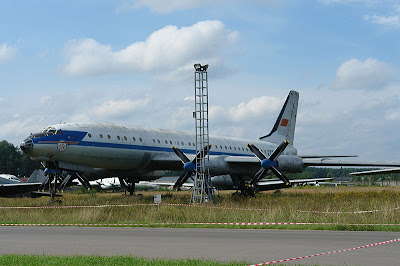 Miss Universe 2009, the 58th Miss Universe pageant was held at the Atlantis Paradise Island, in Nassau, Bahamas on August 23, 2009. It made history when an outgoing queen crowned her successor from the same country, Stefanía Fernández, Miss Venezuela, was crowned Miss Universe 2009 by outgoing titleholder Dayana Mendoza of Venezuela. 83 countries and territories competed for the title and the pageant will broadcast live on NBC and Telemundo.
Miss Universe 2009, the 58th Miss Universe pageant was held at the Atlantis Paradise Island, in Nassau, Bahamas on August 23, 2009. It made history when an outgoing queen crowned her successor from the same country, Stefanía Fernández, Miss Venezuela, was crowned Miss Universe 2009 by outgoing titleholder Dayana Mendoza of Venezuela. 83 countries and territories competed for the title and the pageant will broadcast live on NBC and Telemundo.The presentation show, rehearsals, dress rehearsal and the grand final took place at the Imperial Ballroom, in the Atlantis Paradise Island Resort.
This evening, during one of the year’s most exciting live international television events, a star-studded panel of judges chose Miss Venezuela, Stefania Fernandez, as MISS UNIVERSE 2009 live from Atlantis, Paradise Island, Bahamas.
 Miss Venezuela, Stefania Fernandez, is 18-years-old and she is interested in International Relations. The judging panel for the 2009 Miss Universe Pageant included: Dean Cain, actor and producer best known for his TV portrayal of Clark Kent/Superman; Colin Cowie, author/television personality/designer to the stars; Gerry DeVeaux, award-winning producer, songwriter and style guru; Farouk Shami, Founder and Chairman of CHI Hair Care; Heather Kerzner, Ambassador for Kerzner International and their resorts, including Atlantis, Paradise Island; Richard LeFrak, Chairman, President and CEO, LeFrak Organization; George Maloof Jr., professional sports mogul and hotelier; Valeria Mazza, international supermodel; Matthew Rolston, leading photographer and director; Andre Leon Talley, award-winning writer and editor; Tamara Tunie, actress, "Law & Order: Special Victims Unit;" and Keisha Whitaker, fashion maven and founder of the Kissable Couture lip gloss line.
Miss Venezuela, Stefania Fernandez, is 18-years-old and she is interested in International Relations. The judging panel for the 2009 Miss Universe Pageant included: Dean Cain, actor and producer best known for his TV portrayal of Clark Kent/Superman; Colin Cowie, author/television personality/designer to the stars; Gerry DeVeaux, award-winning producer, songwriter and style guru; Farouk Shami, Founder and Chairman of CHI Hair Care; Heather Kerzner, Ambassador for Kerzner International and their resorts, including Atlantis, Paradise Island; Richard LeFrak, Chairman, President and CEO, LeFrak Organization; George Maloof Jr., professional sports mogul and hotelier; Valeria Mazza, international supermodel; Matthew Rolston, leading photographer and director; Andre Leon Talley, award-winning writer and editor; Tamara Tunie, actress, "Law & Order: Special Victims Unit;" and Keisha Whitaker, fashion maven and founder of the Kissable Couture lip gloss line.Throughout the two-hour event, contestants from over 80 countries and territories around the world competed in three categories: swimsuit, evening gown and personality interview. Dayana Mendoza, Miss Universe 2008, crowned her successor at the conclusion of the two-hour primetime telecast before an estimated worldwide viewing audience of approximately one billion viewers.
Final Results:
First Runner-Up: Miss Domincan Republic, Ada Aimee De La Cruz; will assume the duties of MISS UNIVERSE 2009 if the titleholder for some reason cannot fulfill her responsibilities. Second Runner-Up: Miss Kosovo, Gona Dragusha.
Rest of Top Five: Miss Australia, Rachael Finch; Miss Puerto Rico, Mayra Matos Perez.
Rest of Top Ten: Miss South Africa, Tatum Keshwar; Miss Czech Republic, Iveta Lutovska; Miss Switzerland, Whitney Toyloy; Miss USA, Kristen
 Dalton; and Miss France, Chloe Mortaud.
Dalton; and Miss France, Chloe Mortaud.Rest of Top Fifteen: Miss Albania, Hasna Xhukici; Miss Belgium, Zeynep Sever; Miss Croatia, Sarah Cosic; Miss Iceland, Ingibjorg Egilsdottir; and Miss Sweden, Renate Cerljen.
Miss Photogenic Universe™ Award: Miss Thailand, Chutima Durongdej. The general public voted on www.nbc.com for the delegate who exemplifies beauty through the lens of a camera. She was awarded a $1,000 cash prize and a gift from pageant sponsor Diamond Nexus Labs.
Miss Congeniality Universe™ Award: Miss China, Wang Jingyao. This award reflects the respect and admiration of the delegate’s peers, who voted for her as the most congenial, charismatic and inspirational participant. She was awarded a $1,000 cash prize and a gift from Diamond Nexus Labs.
The MISS UNIVERSE 2009 prize package includes: the Miss Universe tiara and jewelry designed by Diamond Nexus Labs; a two year scholarship from the New York Film Academy worth more than $100,000 dollars to its acting or film-making programs; an eveningwear wardrobe from Carlos Alberto; a custom swimsuit wardrobe from BSC Swimwear Thailand; a shoe collection from Nina
Footwear; an assortment of Luxe Collection video cameras from DXG USA; a six-day/five-night vacation for two at Atlantis, Paradise Island, Bahamas with air travel accommodations by JetBlue Airways; a year-long supply of Farouk Systems products, makers of CHI, the original Ceramic Technology tools; a Skype kit featuring a laptop computer, webcam, speakers and a one-year Unlimited World plan to talk to friends and family; membership to Gravity Fitness and pampering at John Barrett Salon; a fashion portfolio by leading fashion photographer Fadil Berisha; dermatology and skincare services by Dr. Cheryl Thellman-Karcher; consultations with personal stylist Billie Causieestko and access to an event wardrobe from leading fashion designers; a New York City apartment for the year of her reign including living expenses and professional representation by the Miss Universe Organization to further her personal and professional goals.

